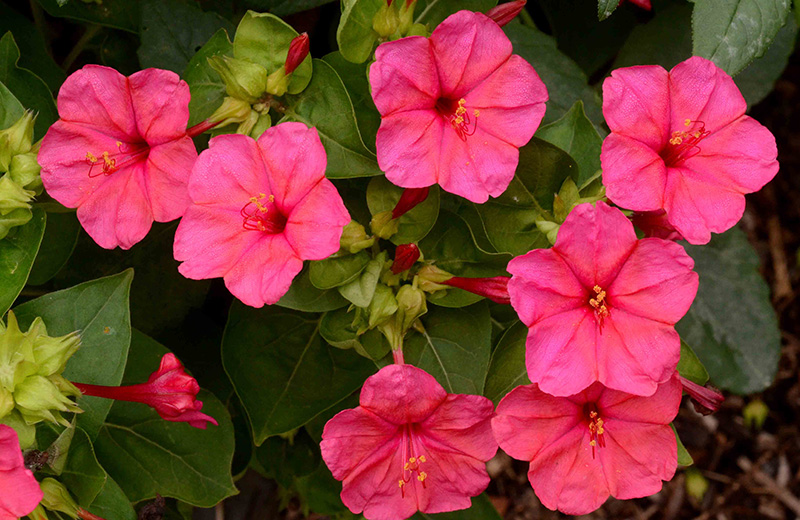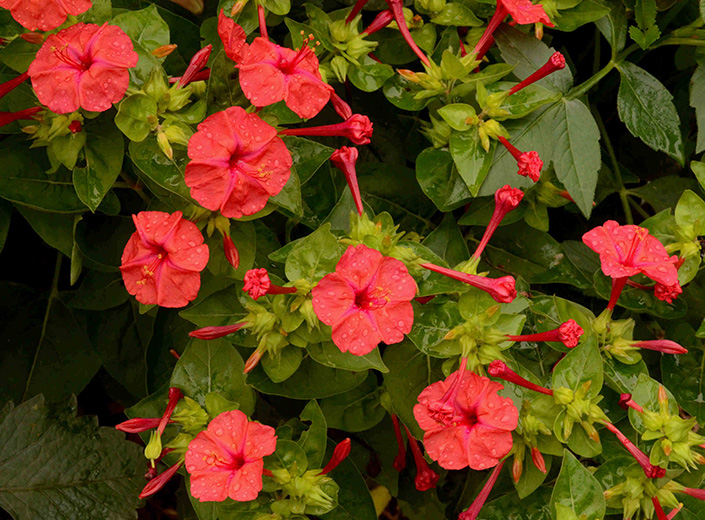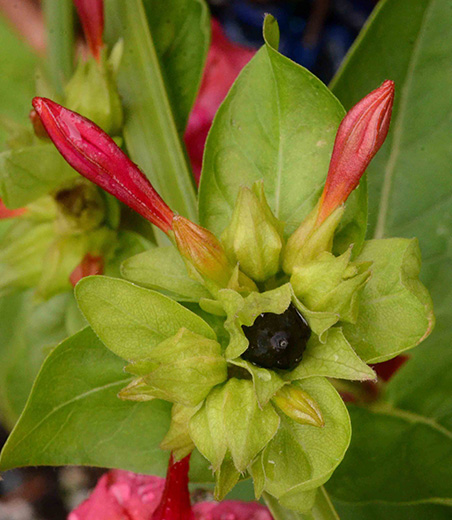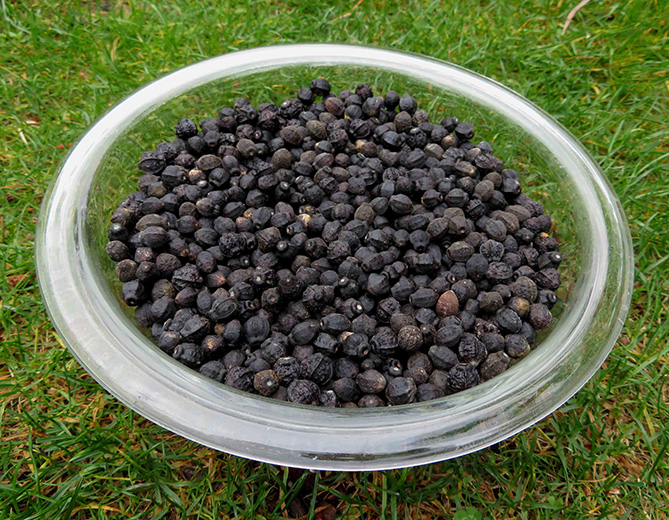
Mirabilis jalapa
October, 2020
This is the inaugural issue of “Horticulturally Yours,” a new fortnightly feature we’ll send out by email the second and fourth week of every month. Each column will focus on a particular plant I’ve come to love over the course of 30 years in gardening around my Seward Park home in Seattle. We’ll be eclectic and inclusive in our choices, embracing annuals, perennials, shrubs and trees, hardy plants as well as tender ones. Each month I’ll alternate a tried-and-true, easy to find item with a more esoteric or challenging selection. In addition to discussing the plants’ appealing features, we’ll also go over cultural requirements, provenance, the origin of botanical names and other fun facts about our floral and foliar friends. For the first few months, we’ll concentrate on indigenous plants of the Americas, from California all the way down to Chile. Are you on board? Let’s get going!

Among my earliest garden-related memories is that of my mother’s love for the flowers of this vigorous, long-blooming, old-fashioned favorite, commonly called four-o’clocks (its blossoms open late in the day) or marvel-of-Peru (a reflection of its country of origin). In memory of her, this April I planted out a packet of seed to line a long, rectangular bed I’d recently restored. Mama thought four o’clocks were wonderful, and in that assessment she was in good company: Linnaeus himself in 1753 chose the Latin word mirabilis (which, if you haven’t already surmised, means “wonderful”) to designate the genus of these plants that the Spanish transported to Europe from their South American home. The specific epithet, jalapa, indicates a long layover in Xalapa, capital of the coastal Mexican state of Veracruz, a town then as now called “the city of flowers” due to its ideal growing climate. Lovers of spicy food may also find their interest piqued, as Xalapa is the origin of, you guessed it, jalapeño peppers. But I digress; let’s get back to business.

What is it that made Linnaeus, mama and myriad others marvel at Mirabilis? Yes, its abundant nocturnal blossoms are sweetly fragrant and come in an eye-popping variety of hues, but the star quality arises from the occasional ability of a single plant to generate flowers of more than one color. Seed strains such as ‘Broken Colors,’ ‘Jingles,’ ‘Peaches and Cream’ and ‘Kaleidoscope’ produce flowers that are actually speckled, swirled, striped or streaked with contrasting colors. Personally, I’m partial to the winning audacity of the single-hued electric magenta option pictured here. It’s downright dazzling at dusk, and on cloudy mornings it simply sings.
Although Mirabilis is perennial, it dies to the ground with the first frost and is usually treated as an annual in our climate. Like dahlias, they produce sturdy tubers that can be dug, stored over winter and replanted the next spring. However, as they grow so easily and quickly from seed (to about 30 inches high and wide) this is only worth the effort if you want to preserve a particularly fetching specimen. Seed is another aspect that makes four-o’clocks stand out. After a blossom withers and falls, a pea-sized fruit forms inside a nest of papery bracts. When it turns black, it’s mature, and will roll right out into your hand. Children and adults alike delight in gathering these daily, like so many tiny, wizened ebony eggs. Even one well-grown plant will produce hundreds of easily stored seeds.


You may be wondering if there is a downside to these marvels. Well, here’s the dirt: After plants have been blooming for a few weeks they can start to look untidy, but you can quickly groom them of spent blossoms and snip off yellowing, exhausted branches. September wind and rain can topple them, but they are easily propped up with short stakes. If you keep a rigid color scheme, avoid planting from variety or mixed-seed packets, as there is no way to predict what you’re going to get, chromatically speaking.
As a final point of interest for native-plant afficionados, four-o’clocks have a local cousin! Mirabilis belongs to the family Nyctaginaceae (meaning “night blooming”), which includes our own yellow sand verbena, Abronia latifolia, commonly found on dunes and beaches of Puget Sound and the Pacific Coast.
This wraps up our first session. We’ll meet again in a couple of weeks.
Horticulturally yours,
Daniel
